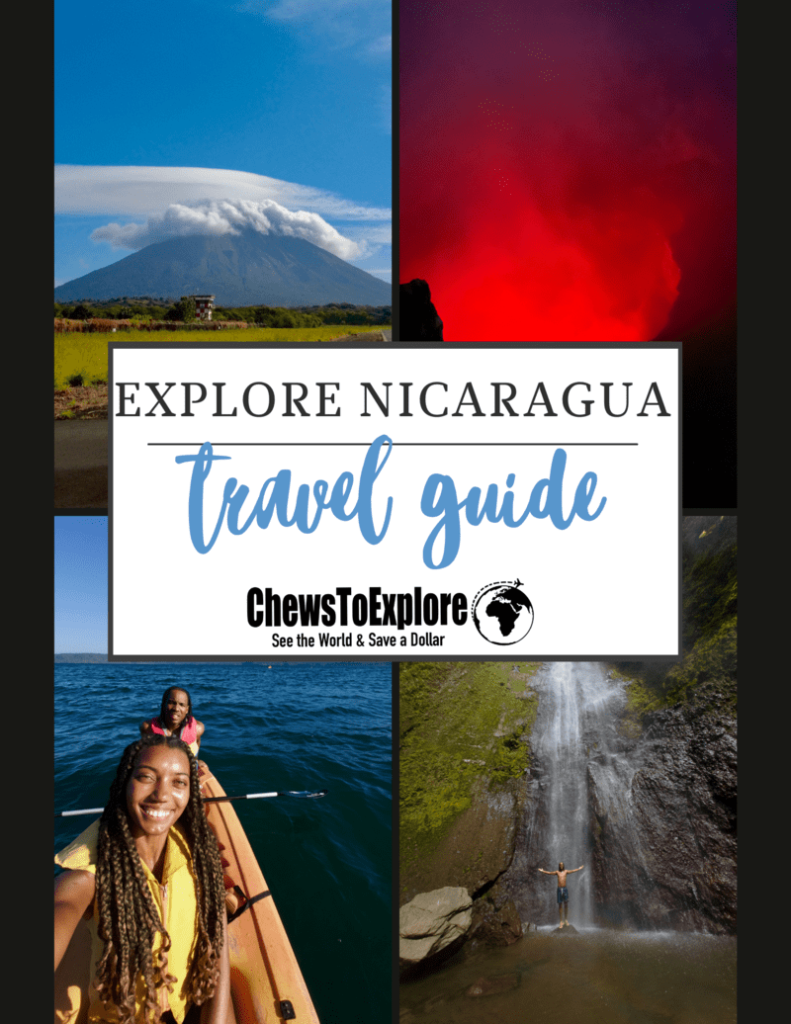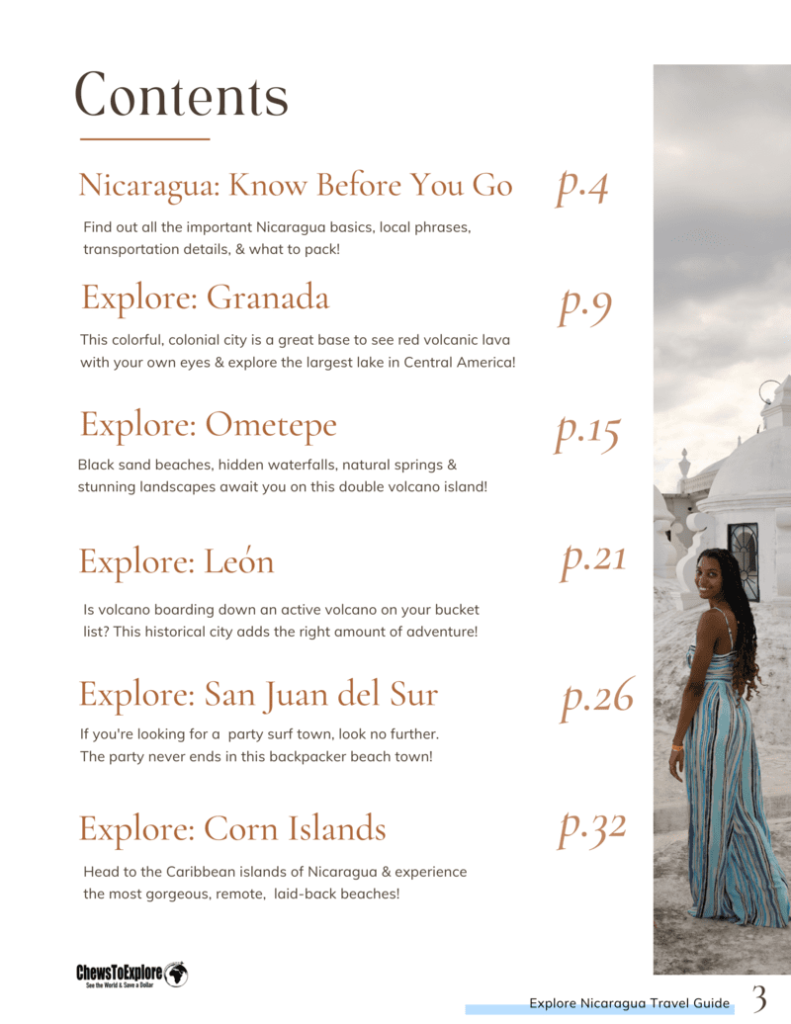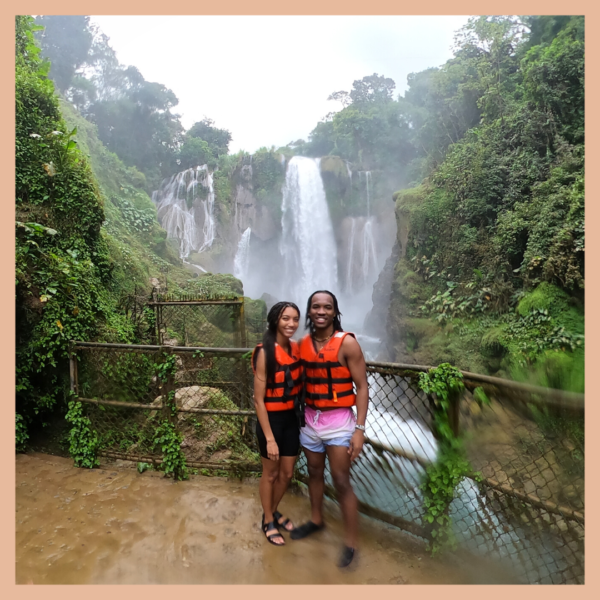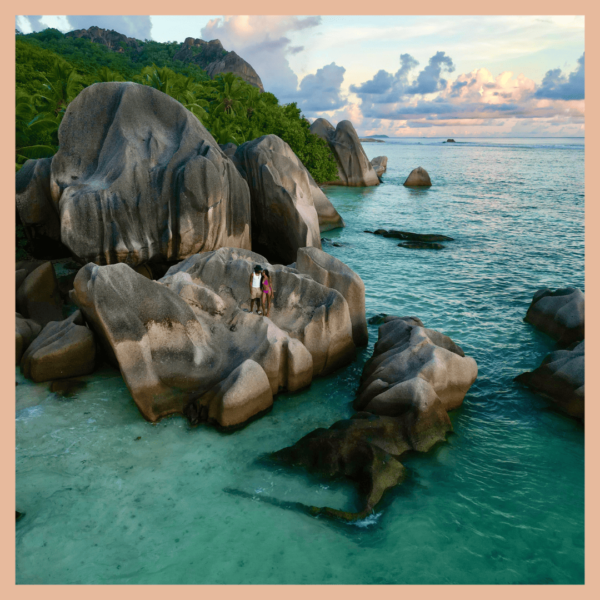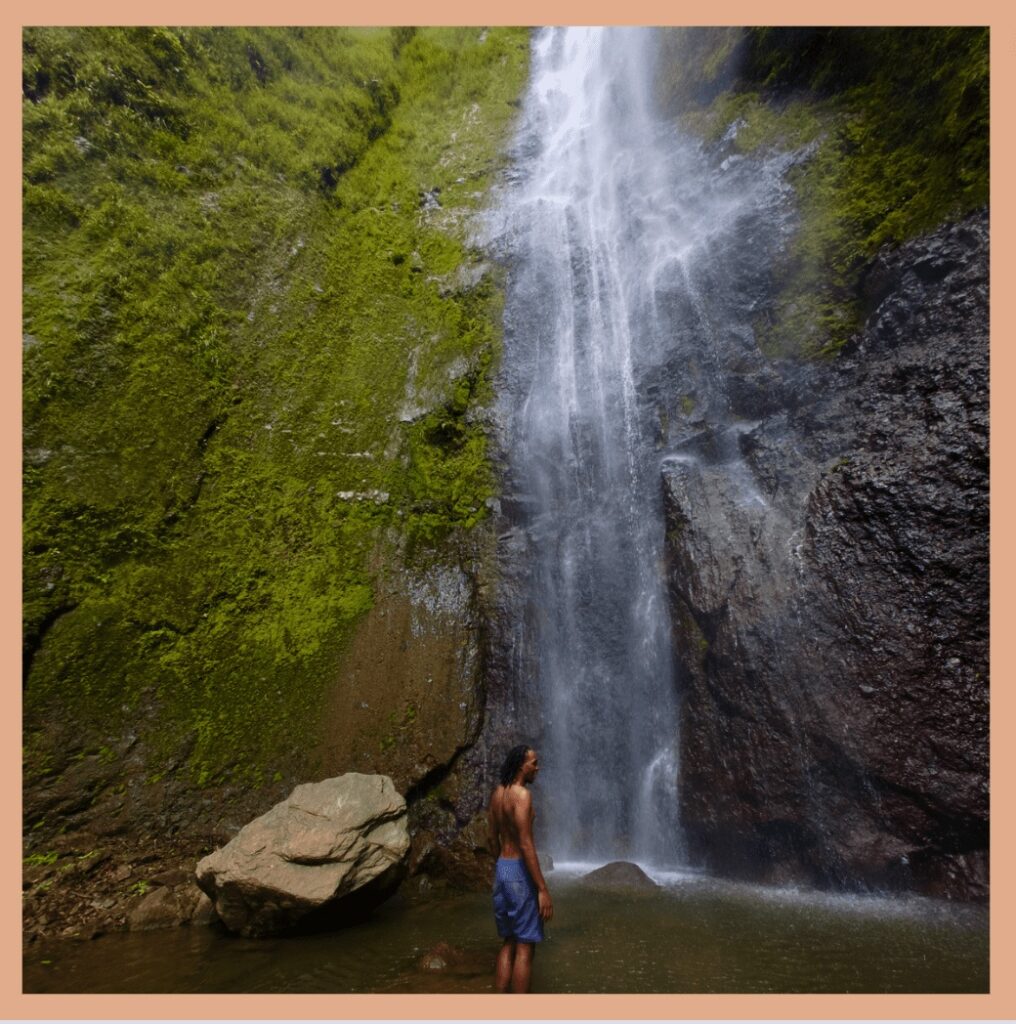
Curious about hiking to one of Nicaragua’s top waterfalls? Here’s everything you need to know about the San Ramon Waterfall.
Disclosure: This post may contain affiliate links, which means we’ll receive a commission if you purchase through our links, at no extra cost to you. Please read full disclosure for more information.
Ometepe Island, a creation of two majestic volcanoes in the middle of Lake Nicaragua, is a place of otherworldly beauty.
On this incredible island, there’s a well-kept secret – the captivating San Ramon Waterfall, also known as Cascada de San Ramon.
In this guide, we’ll cover how to reach Ometepe Island, where to start your San Ramon Waterfall hike, and what to expect along the way.
We’ll help you navigate any challenges so you can fully enjoy this hidden gem.
Ready for an unforgettable hike?
Keep reading for all the details to make your trip to San Ramon Waterfall as smooth as possible.
Want to save time & money planning your trip to Nicaragua? >> Download the Explore Nicaragua
How to Get to Ometepe Island
First things first, you need to get to Ometepe Island.
We’ll walk you through our own experience coming from Granada and provide you with alternative options to reaching Ometepe.
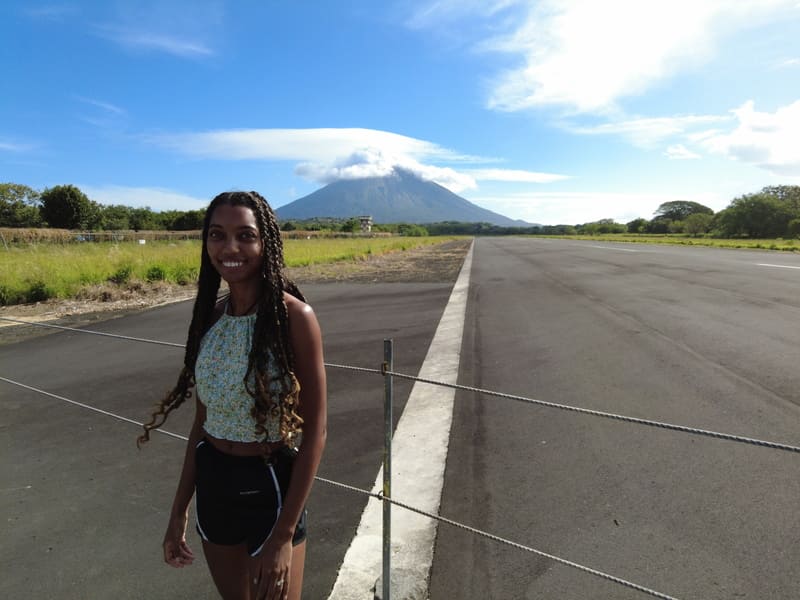
RELATED ARTICLE: El Salvador Travel Tips
What We Did
Our adventure to Ometepe started in Granada, where we kicked off our travels.
Here’s how we did it:
We’re all about seeing more of the world for less.
So we began by taking a convenient $1 USD taxi ride from our Airbnb to the Granada bus terminal.
Next, we hopped onto a “chicken bus” bound for Rivas – a budget-friendly $1 USD per person got us aboard.

Don’t expect extravagance; the chicken bus is essentially a yellow school bus, yet it reliably gets you where you need to go without breaking the bank.
Getting on the bus early guarantees you a seat, as these buses tend to fill up quickly, often leaving passengers standing in the aisles for the duration of the ride.
When it comes to the chicken bus, remember, there is no fixed schedule.
Our stroke of luck came when we jumped out of the taxi and immediately asked the first person we saw which bus was bound for Rivas.
Chew Tip: Strengthen your Spanish skills using Babbel.
Spanish is the primary language spoken, and navigating the busy bus terminal to find the correct buses without communicating in Spanish can be quite a challenge.

When hunger strikes on the bus, don’t worry: vendors hop onto the bus offering snacks and baked goods, all for under $1 USD.
Stepping off in Rivas, we found another couple who was also headed to the Puerto San Jorge ferry terminal to share a taxi.
This brought the cost of our taxi down to a mere $1 USD per person.
At the ferry terminal, a $1 USD per person tourism tax was due.
Even before stepping onto the ferry, you’ll catch a glimpse of the silhouette of Ometepe Island, with its twin volcanic peaks a sight unlike anything we’d seen before.
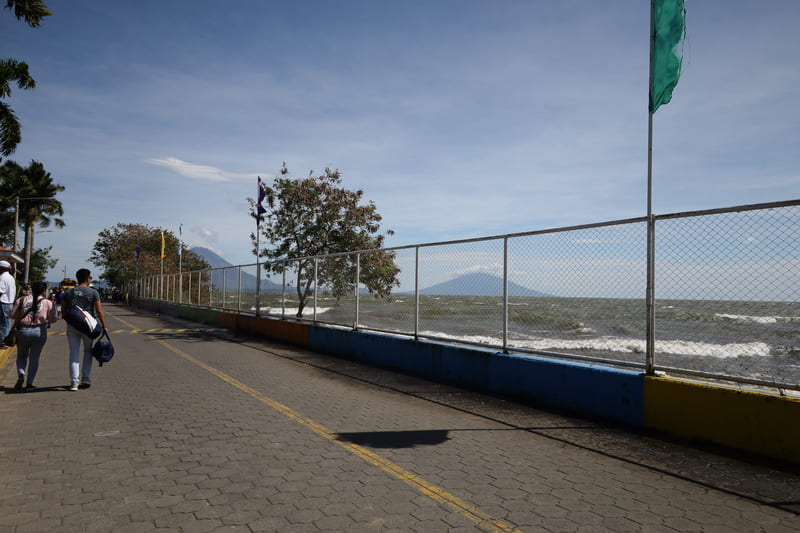
The ferry from San Jorge to Ometepe cost us $1.50 USD per person and lasted about an hour.
We were then ushered to the heart of Ometepe: Moyogalpa.
The moment our feet hit the island, ATV rentals awaited nearby.
We secured an ATV for 24 hours at $60 USD, a convenient way to explore the island’s beauty.
You’ll find the details of our top recommended ATV rentals inside our comprehensive Explore Nicaragua Travel Guide.
RELATED ARTICLE: Top 9 La Parguera Activities
What Else You Could Do
The first step is going to be taking a bus to Rivas. Some options include leaving from Granada (like we did), Managua, or San Juan del Sur.
If you’re starting in Granada, you can find the 2.5-hour bus to Rivas leaving from the Granada Bus Terminal.
These buses run from around 5:30 am to 3 pm and cost around $1 USD per person.
If you’re starting in Managua, you can find the 2.5-hour bus to Rivas leaving from Terminal de Autobuses Mercado Roberto Huembes. These buses run from around 5 am to 6:30 pm and cost around $2.50 USD per person.
If you’re starting in San Juan del Sur, you can find the 45-minute bus to Rivas leaving from the Market Bus Stop. These buses run from around 5 am to 5 pm.
Buses are not on a strict schedule. Their frequency may range from every 30 minutes to 45 minutes to 60 minutes.
For a more accurate departure time estimate, inquire directly at the bus station.
Plan to get on an earlier bus to make sure you reach the ferry terminal before the last ferry leaves.
Also, it’s worth noting that bus fares might fluctuate by around $1 USD.
Foreigners are charged higher rates but don’t hesitate to negotiate if you find the amount they’re asking for to be excessive and unreasonable.
Again, having the ability to communicate in Spanish proves incredibly useful here.
Don’t sleep on Babbel to enhance your language skills beforehand!
Once you get on the bus, do not get off the bus until you reach the Rivas bus terminal which is located here.
Next, you’ll need to get to the San Jorge ferry terminal from Rivas. You can do this via taxi (like we did), or chicken bus.
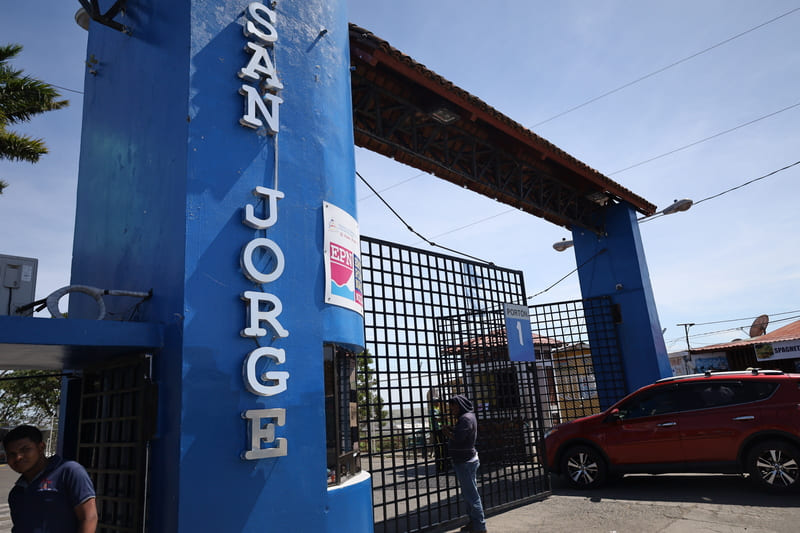
Taxis should cost about $1 USD per person, but it could be even less if you share the ride with others heading your way.
If you find fellow travelers heading in the same direction, consider carpooling to save money.
Just remember to agree on the taxi fare before getting in.
The chicken bus, however, doesn’t follow a fixed schedule.
Buses may appear roughly every 30 minutes, but the actual timing can be unpredictable.
Buses leave as soon as they’re full to the brim, including passengers standing in the aisles.
If you spot a school bus bound for the ferry terminal, jump on it!
Try to board early for a seat. The 20-minute ride costs under $1 USD per person.
Note that if you have large bags on the chicken bus, they’ll be secured on the bus’s roof for a fee of about $1.50 USD.
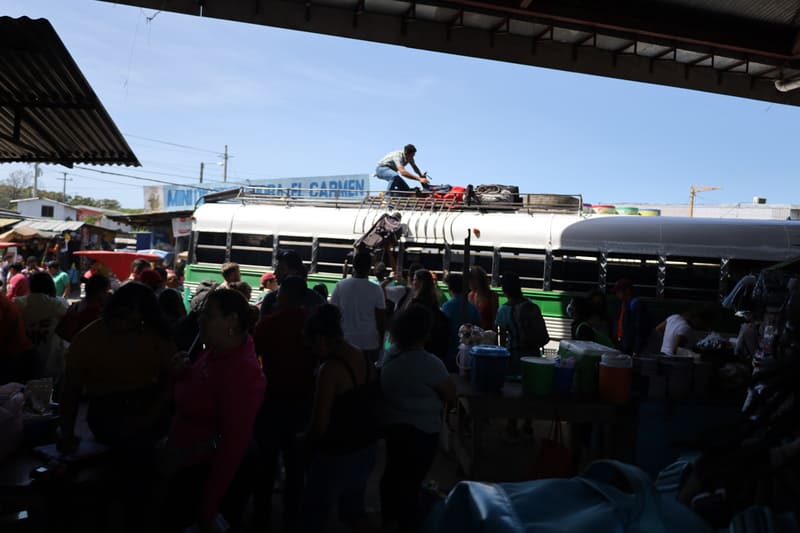
Also, keep in mind that these buses do not run on Sundays.
Upon reaching the San Jorge ferry terminal, you’ll need to pay the tourism tax at the gate which is about $1 USD per person.
You can either purchase your ferry ticket at one of the booths, or you could pay onboard.
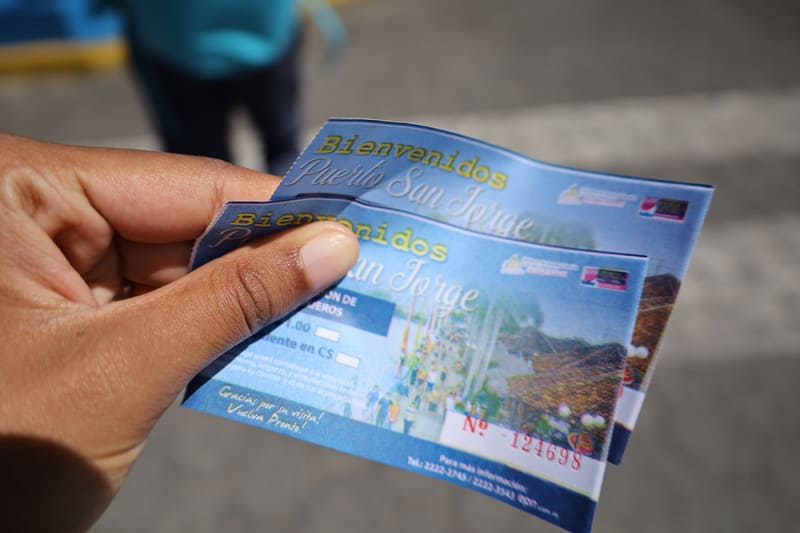
Be sure to arrive at least 15 minutes before ferry departure to make sure you get a seat.
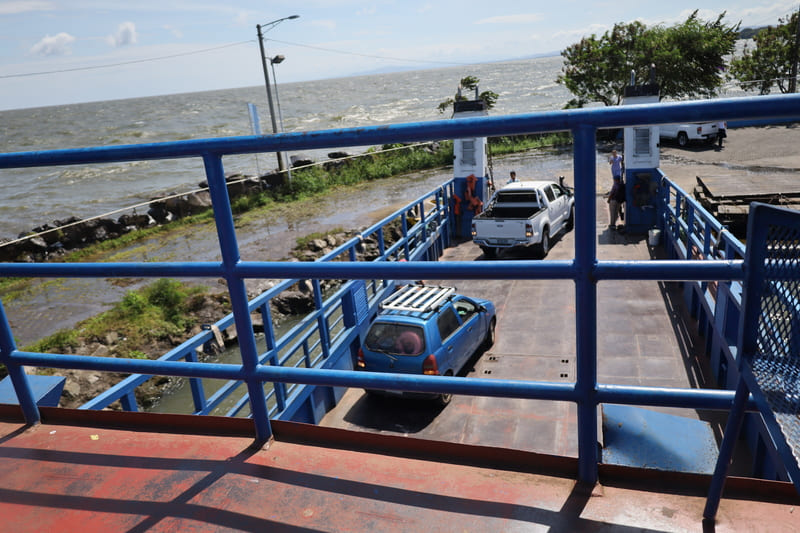
If you prefer to drive yourself, the ferries provide vehicle transportation too.
If you plan to bring a car to the island, you can reserve a spot ahead of time.
You can take the ferry from San Jorge to either Moyogalpa (like we did) on the western side of the island or to San Jose del Sur which is on the eastern side of the island.
The ferries have fewer trips to and from the eastern side of the island near San Jose del Sur.
Additionally, Sundays are generally quieter in terms of transportation in Nicaragua.
It’s best to avoid traveling on Sundays as there are fewer ferries and other forms of public transportation available in Nicaragua on Sundays.
For the most up-to-date ferry schedule for Ometepe Island, including prices and timings, you can refer to this link.
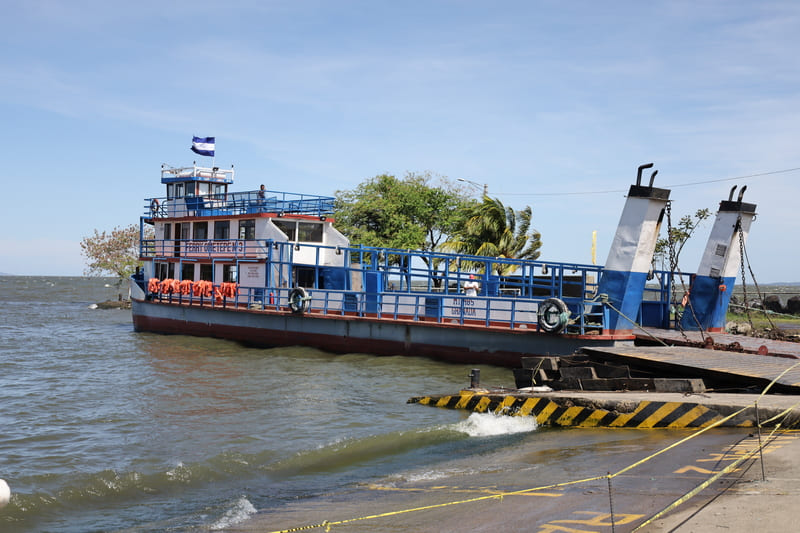
RELATED ARTICLE: Ballestas Islands Tour in Peru
RELATED ARTICLE: How to Spend Four Days in Mexico City
How to Get to San Ramon Waterfall Ometepe
Now that you’re on Ometepe Island, let’s uncover the path to San Ramon Waterfall.
What We Did
During our stay on the west side of Ometepe, we chose to ride our ATV all the way to the island’s eastern side.
The journey to San Ramon waterfall is spectacular.
As you ride along the island, a volcano stands on your right and another volcano on your left.
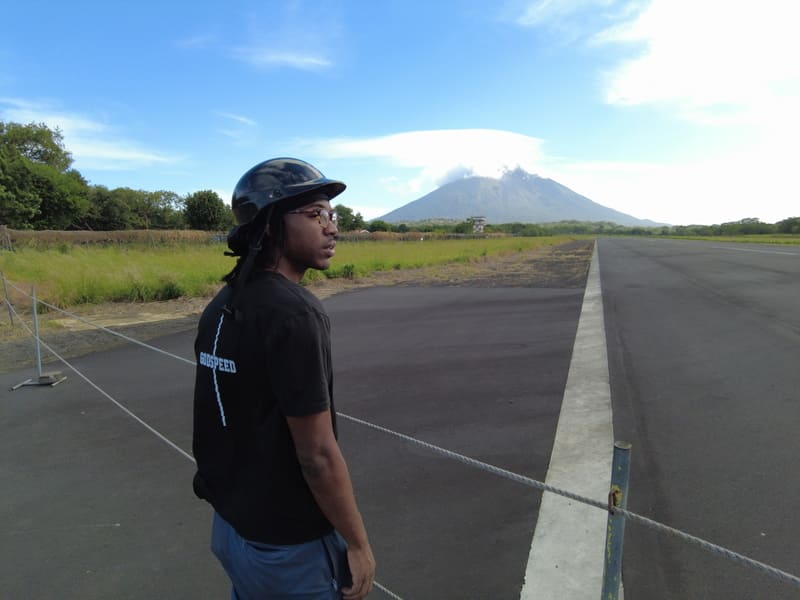
You’ll pass by bodies of water and encounter various animals along the way.
The ride from the west side of the island to the entrance of the San Ramon waterfall hike took us approximately one hour.
On the western side, the roads were nicely paved with a few speed bumps. However, on the eastern side, road conditions weren’t always as smooth.
Be prepared for a bumpy ride along the east side.
When we visited in January 2023, we noticed a lot of construction, so it’s possible road conditions are improving on the eastern side of the island.
The entrance to the hike is located at the Ometepe Biological Field Station.
As we arrived, a large yellow gate welcomed us at the front entrance.
RELATED ARTICLE: Is Paracas Peru Worth Visiting?
What Else You Could Do
To reach San Ramon Waterfall, you have several options: you can choose an ATV (like we did), a scooter, a taxi, or a bus.
While scooters might be more budget-friendly (closer to about $20 USD for 24 hours), ATVs (about $60 USD for 24 hours) are more reliable vehicles for the terrain.
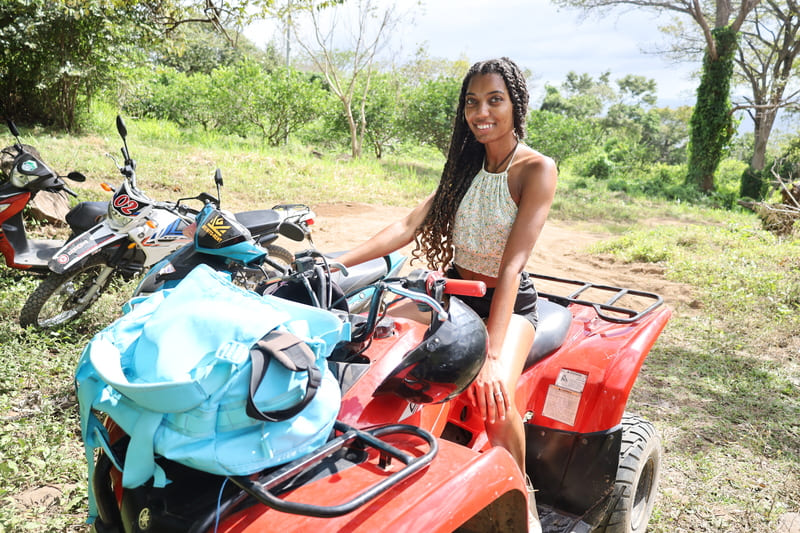
On the more expensive side, you could hire a roundtrip taxi from Moyogalpa for about $80 USD roundtrip.
You could also opt for a public bus which would be your cheapest option.
You can find the Ometepe bus schedule linked here.
Keep in mind, Sundays will be difficult catching public transportation.
We explored San Ramon Falls on a Sunday and were practically the only vehicle on the roads as we traveled on our ATV.
Buses are not the most dependable mode of transportation and I’d strongly suggest opting for an ATV ride to San Ramon Waterfall.
RELATED ARTICLE: How to Get to Machu Picchu Without Hiking
San Ramon Waterfall Entrance
You’ve made it all the way to the Ometepe Biological Field station and now it’s time to pay the entrance fee.
The entry fee was 100 cordoba per person, which amounts to approximately $2.70 USD, plus an additional 50 cordoba ($1.30 USD) for the ATV fee.
In total, it was 250 cordoba ($4 USD) for the two of us with our one ATV.
We continued along the dirt path on our ATV until we reached a green gate. Although it was closed, it was unlocked.
After opening the gate, we followed the dirt route.
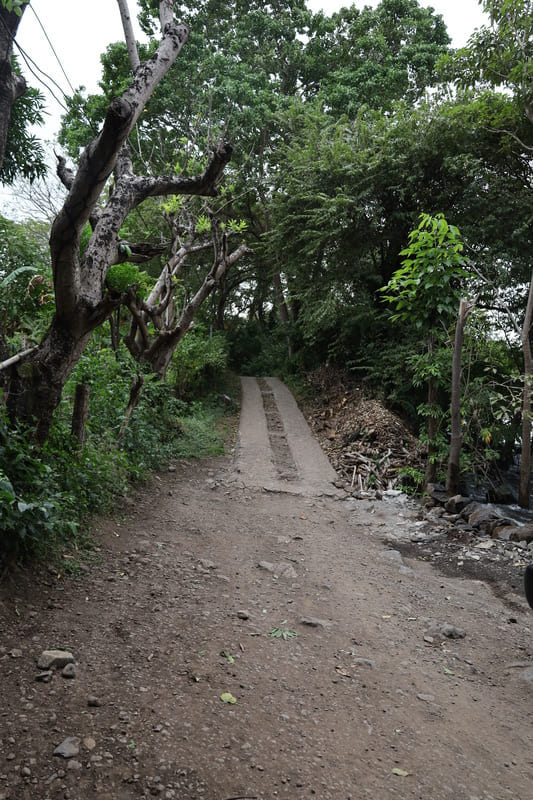
I highly, highly, highly recommend taking on the hike with an ATV to start, as it significantly reduces the time required for the hike.
It took us only ten minutes to drive from the main gate where we paid to the beginning of the waterfall hike where ATVs can no longer pass.
The road can be a bit uneven, which is why an ATV is an excellent choice – it can handle rocky paths much better than a scooter.
As we rode along the trail, we asked fellow hikers about their travel time.
This same ten-minute drive from where we paid the entry fee to the hike’s official entrance took other hikers about 1.5 hours on foot.
From the official start of the San Ramon waterfall hike to the San Ramon Waterfall is another 1.5-hour walk.
If you take an ATV, it cuts your overall journey to the falls in half.
Having an ATV is essential, and otherwise, this hike might not be worth it in our opinion.
RELATED ARTICLE: Is La Fortuna Worth Visiting?
RELATED ARTICLE: Snorkeling With Sharks in Caye Caulker
San Ramon Waterfall Parking
You can park your vehicle near the main entrance where you pay the entrance fee for the San Ramon waterfall hike.
The parking is free and in a gated area.
If you have an ATV, I HIGHLY recommend you drive it as far as you can up the path.
We reached a point that was the official entrance to the waterfall hike where you couldn’t bring the ATV any further.
This was after around ten minutes of driving.
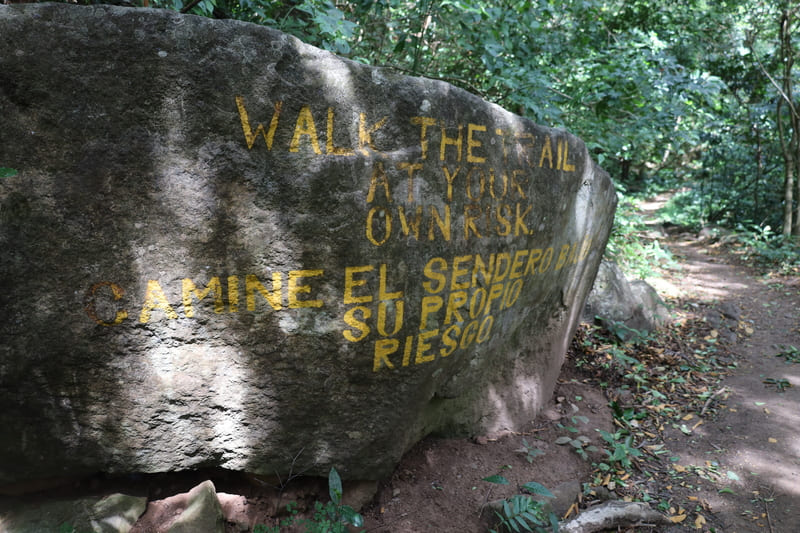
We parked our ATV in this dirt area before taking on the remainder of the hike on foot.
This parking is also free. Just be mindful that you are leaving your belongings at your own risk.
We experienced no issues with parking.
RELATED ARTICLE: How to Spend the Best Weekend in El Salvador
Cascada de San Ramon Hike
The hike offers a shaded path, although there are rocks to watch out for to prevent twisting your ankle.
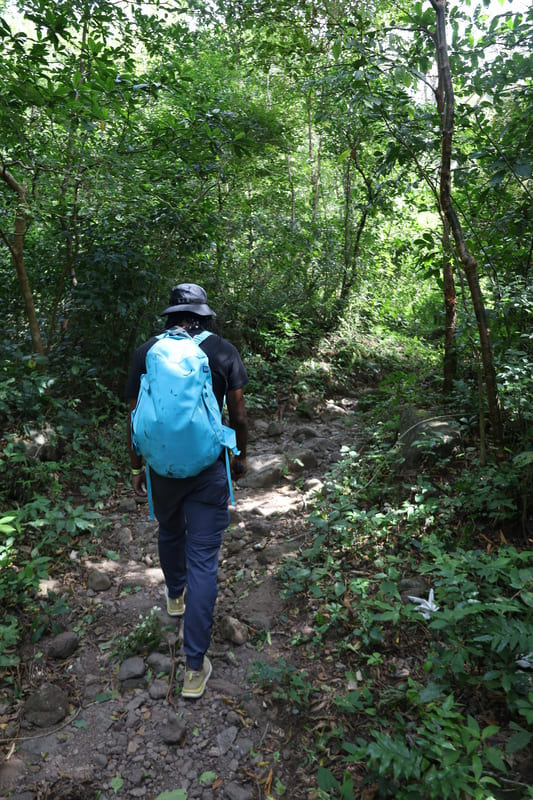
It’s wise to wear closed-toe water shoes with good grip for added safety. (We really like the TropicFeel Sneakers).
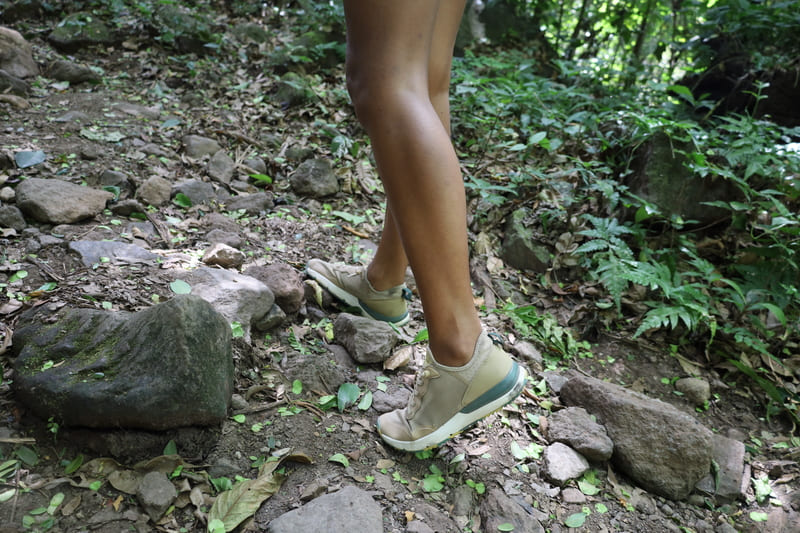
The trail is well-marked if you know what to look for – yellow straps encircle trees, logs, and rocks.
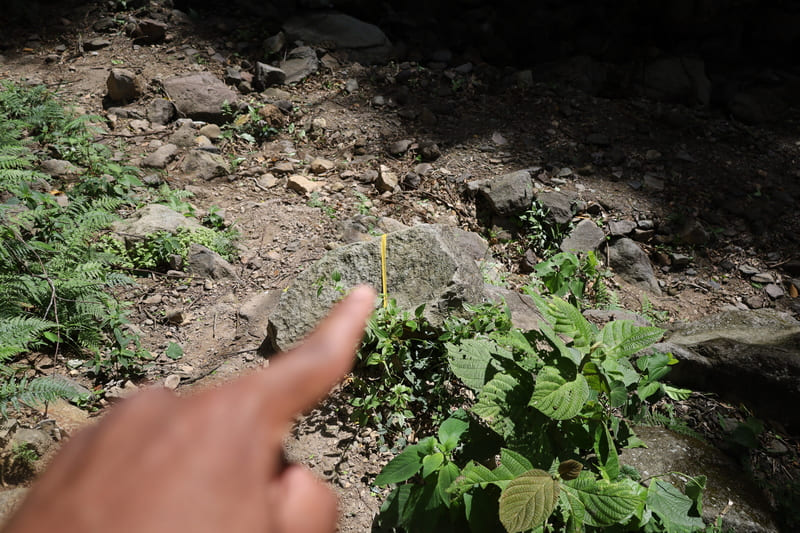
When you encounter a crossroad, go for the path to the right and avoid venturing into the bushes on the left.
We made that mistake and found no clear way out.
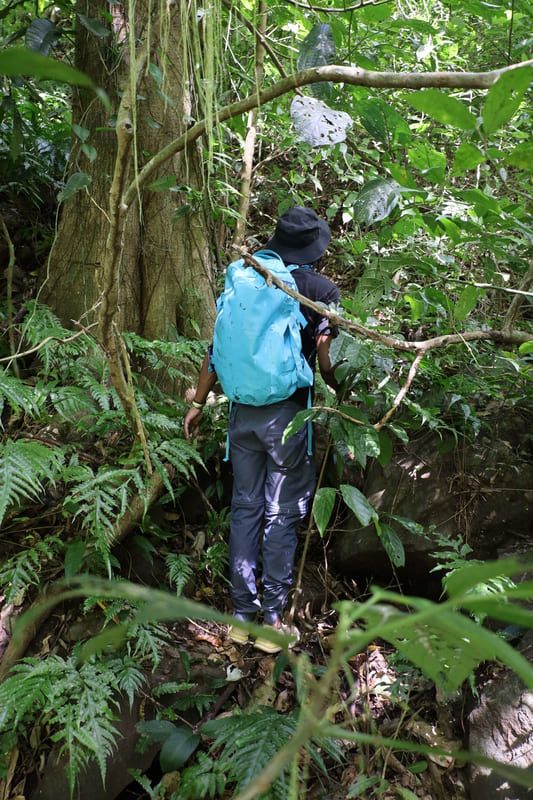
Instead, stay alongside the stream, following the yellow straps and the black pipe that runs along it.
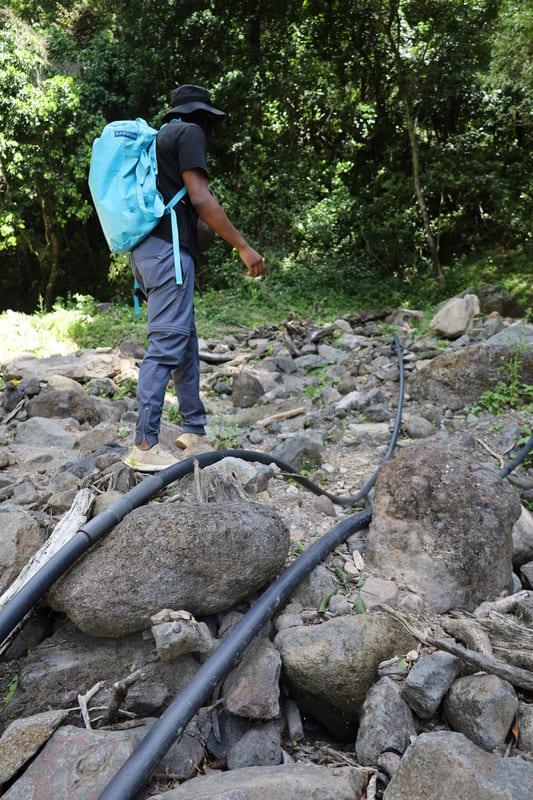
Eventually, you’ll need to cross the river. Roll up your pants and navigate the rocks to make your way across.
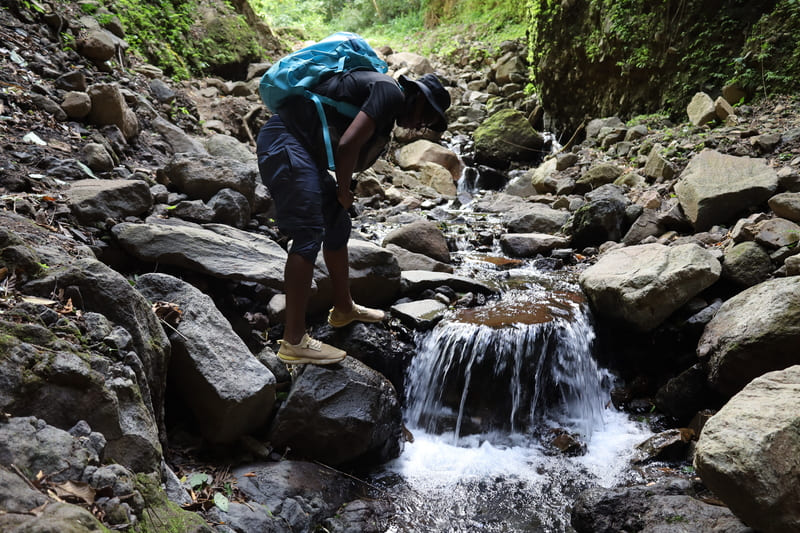
Ascend a few rocks, taking it at your own pace.
We reached a point where further progress involved climbing larger rocks.
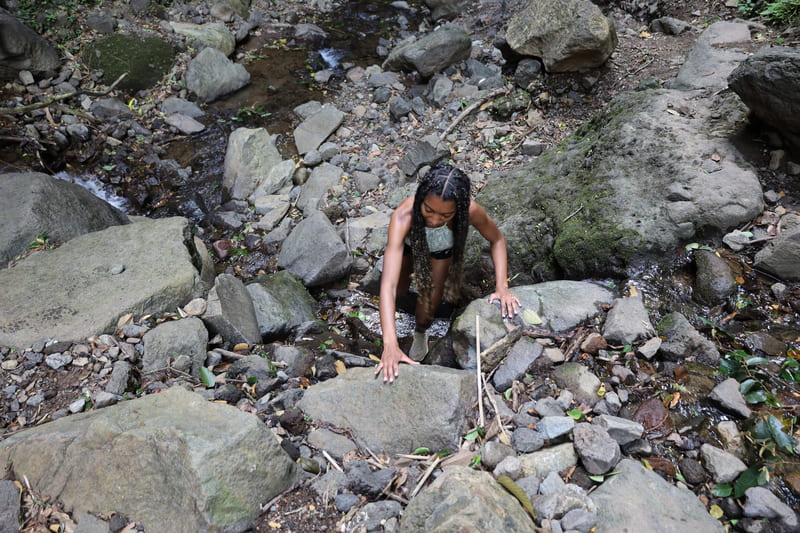
Personally, I wasn’t motivated to continue, partly due to fatigue. Besides that, we went during dry season, and I doubted if it would be worth it.
My advice: arrive energized, bring snacks, pack water, consider visiting during the wet seasons, and even in dry season, you might be surprised – there was some water flowing when my husband continued and saw San Ramon Falls in all its glory.
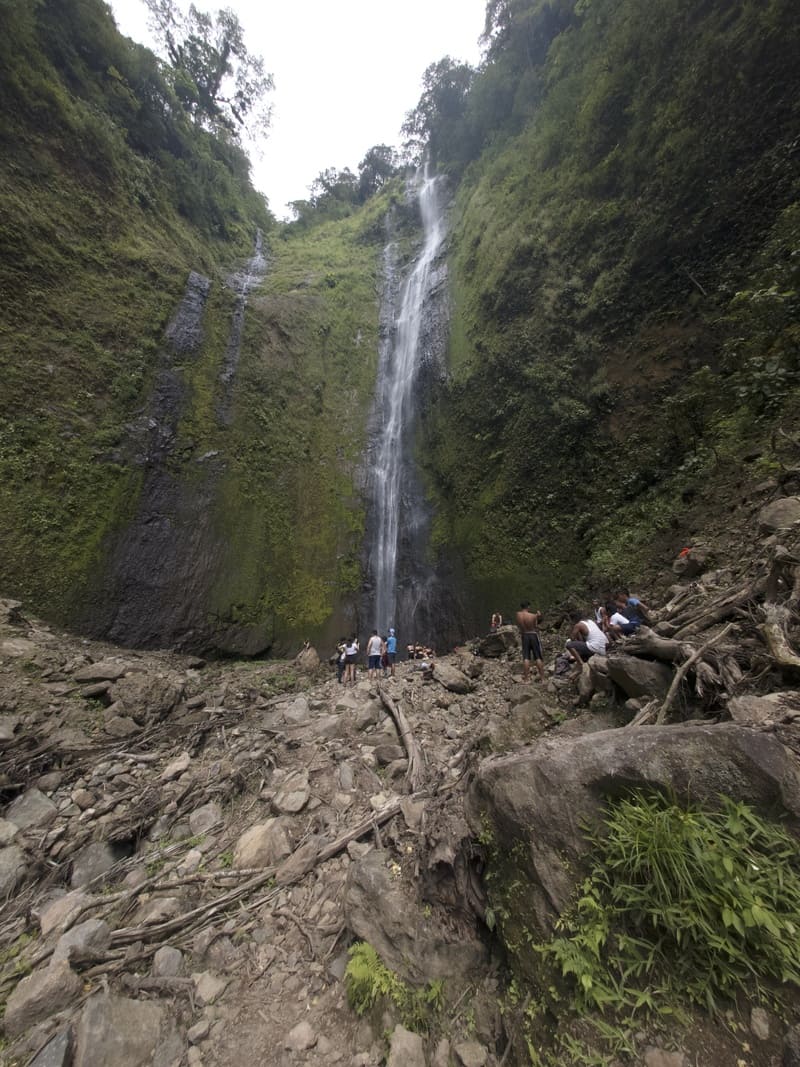
I’d categorize this hike as moderate to difficult. It’s not an easy hike! I want you to be mentally prepared, especially if you’re not accustomed to hiking.
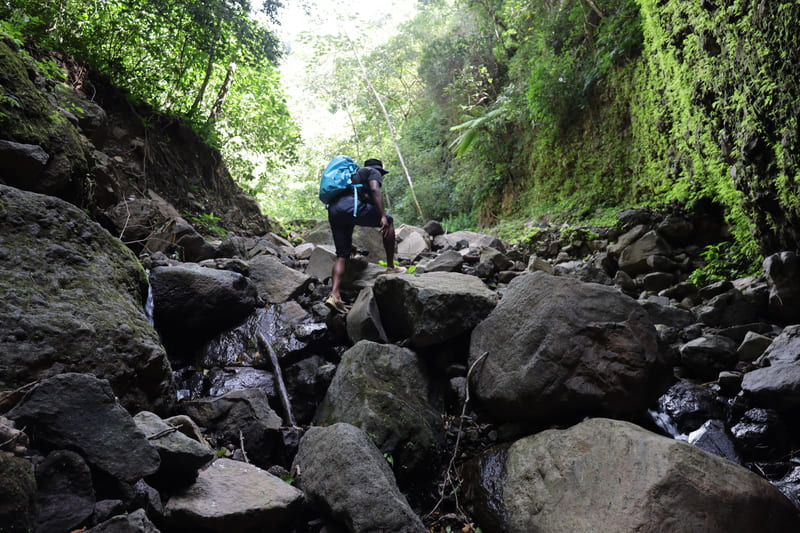
The rock climbing and river crossings can pose a challenge, particularly in the Nicaraguan heat.
However, there were numerous individuals who went beyond my stopping point – young, old, even with dogs!
It’s a mindset thing. If you’re determined to complete the hike (unlike me), you’ll manage.
At the same time, it’s important to know how to practice self care while traveling.
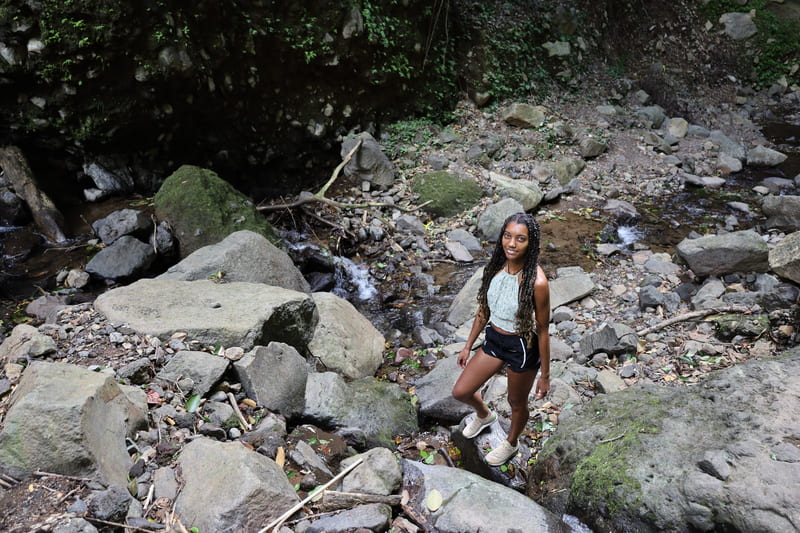
According to my husband, it’s entirely worth it!
He says the experience is truly remarkable and you can treat yourself to a quick dip in the waterfall.
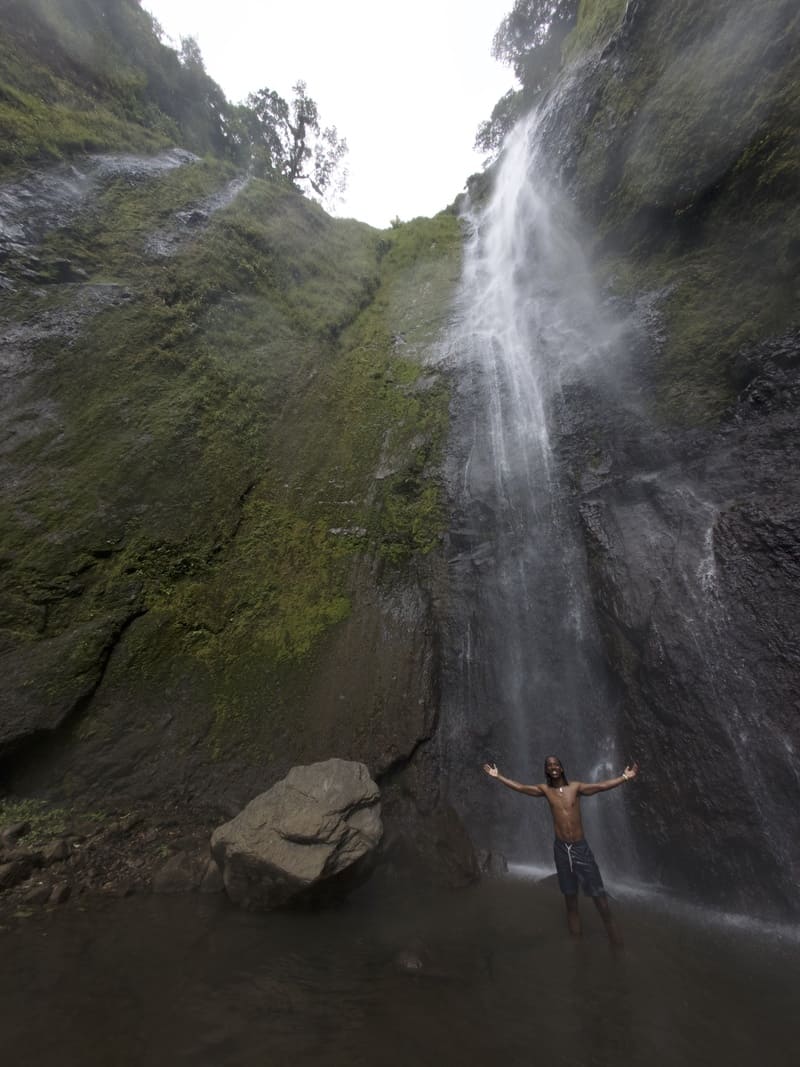
Keep in mind, though, the water is quite shallow, so swimming isn’t an option, even in the wet season.
Nevertheless, the refreshing coolness offers fantastic relief after the hike.
The return walk to where we parked our ATV took only 30 minutes, quicker than the ascent.
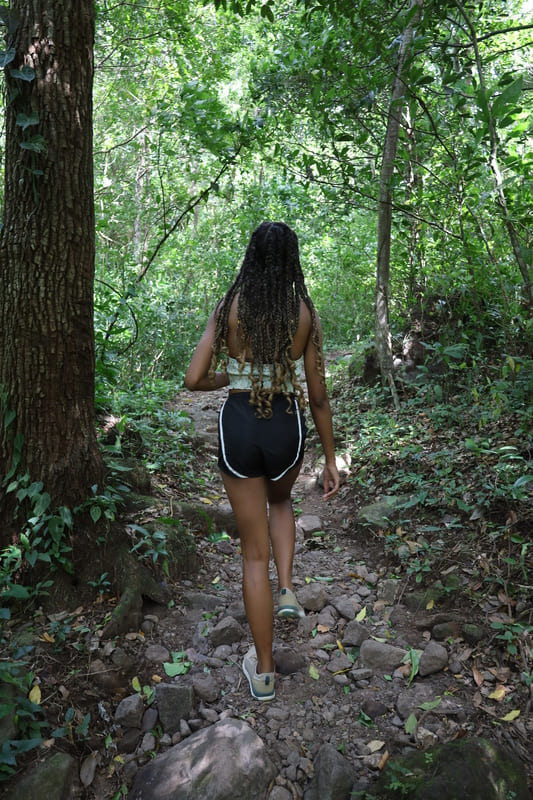
RELATED ARTICLE: Best Swimmable Beaches in Cabo Mexico
RELATED ARTICLE: 12 Unique Things to Do in Lima
Best Time to Visit San Ramon Waterfall
Nicaragua has two main season: dry season and wet season.
The best time to visit the San Ramon Waterfall in Ometepe is from May through October, which is during Nicaragua’s wet season.
However, you might wonder, why opt for a hike if there’s a chance of rain?
Well, in Nicaragua’s wet season, you can anticipate afternoon showers while enjoying clearer mornings.
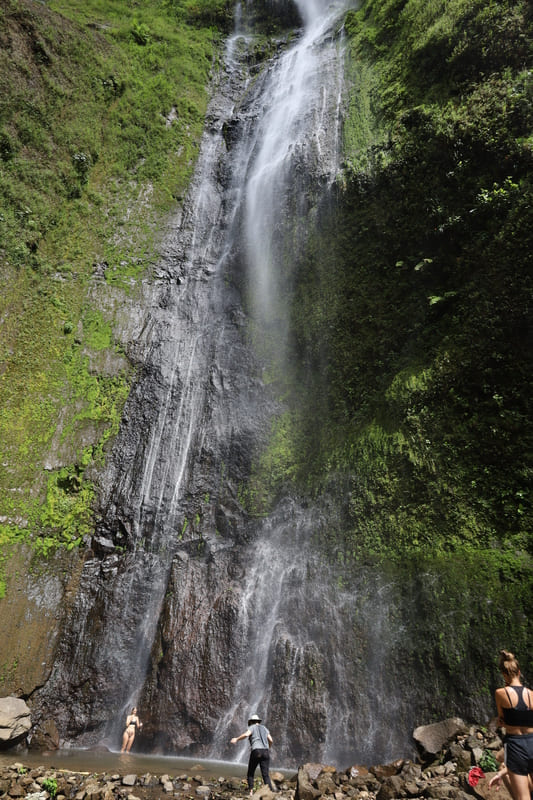
The best time to visit the falls is during the wet season, preferably on an early morning mid-week.
This choice ensures fewer crowds, reduces the likelihood of rain, and provides the best opportunity to witness the waterfall in its full flow.
Ideally, you don’t want to go during the dry season because you run the risk of San Ramon waterfall being dry.
While the hike itself offers an incredible nature exploration, the ultimate reward lies in witnessing the waterfall flowing.
RELATED ARTICLE: Pulhapanzak Waterfall Honduras
What to Bring to San Ramon Falls
- Cash for entrance fee
- Water
- Snacks
- Lifestraw
- Sturdy shoes
- Sunscreen
- Swimwear
- Sun hat
- Waterproof bag
- Waterproof phone case
- Waterproof camera
- ATV (if you don’t have an ATV we personally do not think this hike is worth it)
RELATED ARTICLE: Last Minute Packing List
RELATED ARTICLE: Ultimate Reviews for Spirit Airlines
San Ramon Waterfall Ometepe Island Nicaragua FAQs
Does Nicaragua have water falls?
Yes, Nicaragua has waterfalls, and one of the best ones to visit during the wet season is San Ramon Waterfall in Ometepe.
What is the famous waterfall in Nicaragua?
San Ramon Waterfall or Cascada de San Ramon is a famous waterfall in Ometepe, Nicaragua.
How do I get to San Ramon waterfalls?
To get to San Ramon Waterfalls you will start at Ometepe Biological Field Station and follow the trail to the falls.
How long is the San Ramon hike?
The hike to San Ramon Waterfall is about 8 km roundtrip starting from the entrance where you paid the entry fee.
Can I visit San Ramon waterfall year-round?
Absolutely! However, the best time to visit is during wet season (May – October). During dry season you run the risk of the falls being dry.
What’s the level of hiking difficulty at San Ramon Waterfall?
The San Ramon waterfall hike is moderately challenging, suitable for most fitness levels, but it’s important to be prepared for uneven terrain.
Can I swim in San Ramon Waterfall’s pool?
The base of San Ramon waterfall is not very deep, so you won’t be able to swim. You can still take a dip in the cool waters outside of dry season.
How do I contribute to sustainability while hiking?
Properly dispose of your trash, leaving no trace behind. Stick to marked trails and remember to bring a reusable water bottle.
RELATED ARTICLE: Extreme Minimalist Travel
RELATED ARTICLE: How to Get to El Limon
Final Thoughts on San Ramon Waterfall Nicaragua
As you plan your visit to the stunning San Ramon Waterfall on Ometepe Island, imagine the vibrant landscapes and the thrill of discovery awaiting you.
But there’s much more to explore in Nicaragua. From the colonial charm of Granada and historic Leon to the coastal allure of San Juan del Sur and the peaceful Corn Islands, Nicaragua has it all.
Our Explore Nicaragua Travel Guide is your go-to resource for discovering these destinations and more.
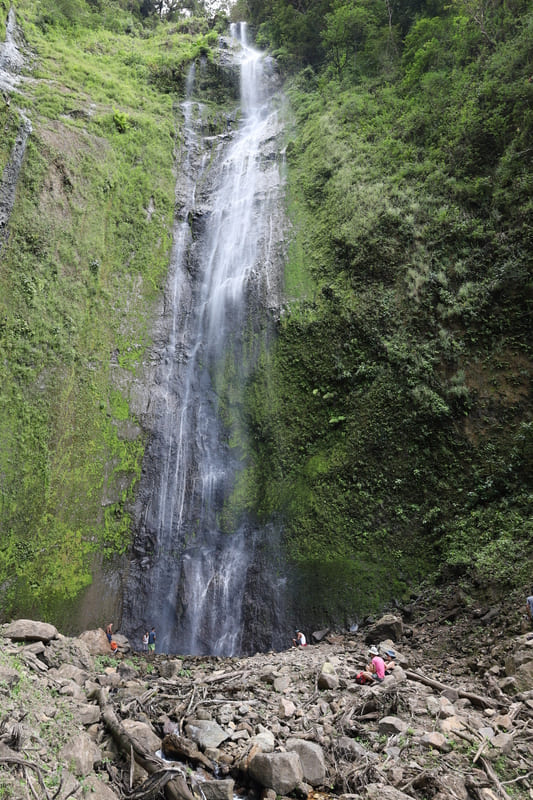
This 40-page digital guide provides:
- Practical tips and packing lists for a smooth trip.
- Local transportation options and personal driver recommendations.
- Reliable tour companies to enhance your experience.
- Over 30 activities, from adventurous to relaxing.
- 40+ accommodation options to fit all budgets.
- 50+ top dining spots for every taste.
- A 5-day sample itinerary to help plan your perfect trip.
With our guide, you’ll get detailed insights to make your Nicaraguan adventure unforgettable.
Ready to explore Nicaragua? Grab your copy of the Explore Nicaragua Travel Guide and start planning your journey today.
Download the Explore Nicaragua Travel Guide today!


